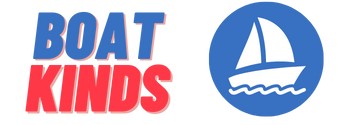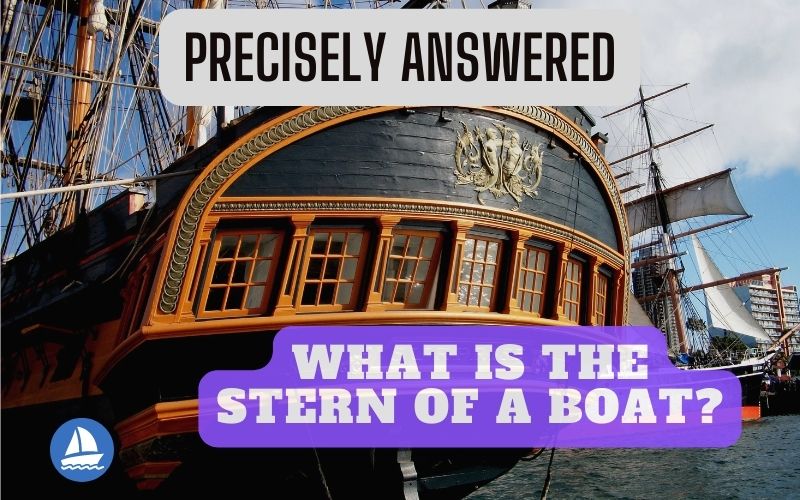The stern of a boat is the rear part of the vessel, opposite the bow (the front part of the vessel). The term “stern” comes from the Old Norse word “stjorn,” which means steering. In many boats, the stern is the location where the steering mechanism is located, hence the name.
The stern can include several important parts of the boat, including the transom, which is the flat or curved surface at the back of the boat that provides a surface for mounting the motor, rudder, and other equipment.
The stern can also include the swim platform, which is a flat surface at the water level that allows passengers to get in and out of the water easily. In larger boats, the stern may include other features such as a cockpit, seating areas, and other amenities.
The shape of the stern can also vary depending on the type of boat. For example, a boat with a flat stern may be better suited for fishing or other activities where stability is important, while a boat with a V-shaped stern may be better suited for high-speed performance on the water.
The design of the stern can also impact the boat’s handling and maneuverability, making it an important consideration when choosing a boat for a particular purpose.
Why is it Called the Stern?
The name “stern” comes from the fact that it is where a boat’s rudder and steering controls are located. Historically, this was the place where the tiller would be attached, and it was the most accessible point for people to operate the steering controls.
Stern Styles & How They Impact Performance
There are a variety of different stern styles that you can find on different boats, and they all have their benefits. Some of them are more aerodynamic than others, which can help you get better performance out on the water.
Which Are The Various Types Of A Boat’s Stern?
A boat’s stern is the backside area, which is opposite to the bow. It is an important part of the boat as it is where the propeller is installed.
There are several different types of sterns on boats, each with its unique characteristics and advantages. Here are some of the most common types:
- Transom stern: A transom stern is the most common type of stern on modern boats. It features a flat or curved surface at the back of the boat that provides a surface for mounting the motor, rudder, and other equipment. The transom stern is easy to build, and maintain and it provides ample space for the motor.
- Canoe stern: A canoe stern features a rounded or elliptical shape that is reminiscent of a canoe. It is often used on sailboats and other vessels that prioritize speed and performance over cargo capacity.
- Cruiser stern: A cruiser stern is a traditional design that features a curved shape at the back of the boat that provides ample space for seating, storage, and other amenities. This type of stern is often found on larger recreational boats, and it provides a comfortable and functional space for passengers.
- Fantail stern: A fantail stern is a type of transom stern that features a flat extension at the waterline that widens out behind the transom, creating a large, open space at the back of the boat. This type of stern is often used on larger recreational boats and provides ample space for seating and other amenities.
The choice of stern type can depend on various factors, such as the purpose of the boat, the desired performance, and the design of the hull.
What is the Difference Between Stern and Aft?
“Stern” and “aft” are both nautical terms used to describe the back of a boat, but they have slightly different meanings.
The term “stern” specifically refers to the back end of the boat, including the transom, which is the flat or curved surface at the back of the boat that provides a surface for mounting the motor, rudder, and other equipment.
The stern is the area of the boat where the steering mechanism is typically located and is usually the widest part of the boat.
On the other hand, “aft” is a more general term that refers to the area of the boat located towards the back. It includes everything behind the mid-point of the boat, including the stern, as well as other parts of the boat such as the cockpit, cabins, and other living spaces.
The term “aft” is often used to describe the location of various objects on the boat, such as the aft cabin, which is a cabin located towards the back of the boat.
In general, the term “stern” is more specific and is used to refer to the back end of the boat in a technical sense, while “aft” is a more general term that can be used to describe the back of the boat or the location of various objects on the boat.
What is the Major Danger of Anchoring a Fishing Boat from the Stern?
Anchoring a fishing boat from the stern (back of the boat) can be dangerous because it can cause the boat to capsize or swamp in rough water or high winds.
This is because anchoring from the stern can cause the weight of the boat to be distributed unevenly, with most of the weight at the back of the boat. As a result, the boat can be more susceptible to being pushed around by waves and wind, which can cause it to tilt and take on water.
In addition, anchoring from the stern can cause the boat to drift too close to shore or other boats, which can be dangerous if the boat is not equipped with adequate safety features such as fenders and dock lines.
The stern of the boat is also the area where the motor is located, so it is important to ensure that the motor is raised and secured before dropping anchor, to prevent damage to the motor and to ensure the safety of passengers.
For these reasons, it is generally recommended to anchor a fishing boat from the bow (front of the boat) instead of the stern, as this can help distribute the weight of the boat more evenly and provide better control in rough water or high winds.
If you must anchor from the stern, it is important to take extra precautions to ensure the safety of the boat and its passengers.
What Does the Stern Do?
The stern of a boat serves several important functions, including:
- Steering: The stern of the boat is typically where the rudder is located, which is used to control the direction of the boat. By turning the rudder, the boat’s captain can steer the boat in the desired direction.
- Propulsion: In many boats, the stern is also where the motor is located. The motor provides the power to turn the propeller, which propels the boat through the water.
- Stability: The stern of the boat plays an important role in maintaining its stability of the boat. By distributing the weight of the boat towards the back, the stern helps to keep the boat level and prevent it from tipping or capsizing.
- Mooring: The stern of the boat is often used for mooring or tying up the boat to a dock, buoy, or anchor. Many boats are equipped with cleats or other hardware at the stern to make it easier to secure the boat in place.
Overall, the stern is an essential part of the boat that plays a crucial role in its operation and safety.
Elliptical Sterns Found On Ships
An elliptical stern is a type of stern design that is used on some modern ships, particularly those used for ocean-going transportation or commercial purposes. An elliptical stern has a rounded, elliptical shape, as opposed to a flat or V-shaped stern.
The main advantage of an elliptical stern is that it can improve the hydrodynamics of the ship, which can lead to improved performance, fuel efficiency, and maneuverability. The elliptical shape of the stern can help to reduce turbulence and drag, which can in turn reduce the amount of power needed to propel the ship through the water.
However, an elliptical stern can also have some disadvantages. For example, the rounded shape can make it more difficult to install certain types of equipment or machinery, and it can also make the ship more difficult to maneuver in certain conditions, such as in heavy seas or tight spaces.
Overall, the decision to use an elliptical stern on a ship depends on a number of factors, including the intended use of the ship, the type of cargo it will carry, and the environmental conditions it will face.

